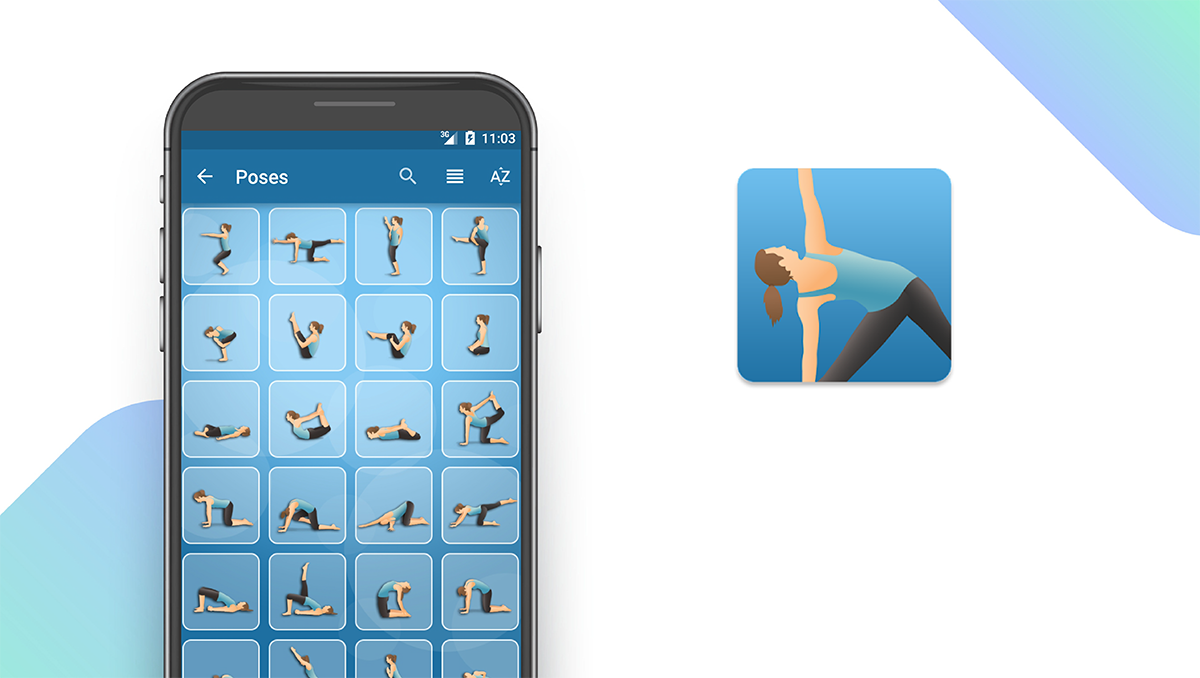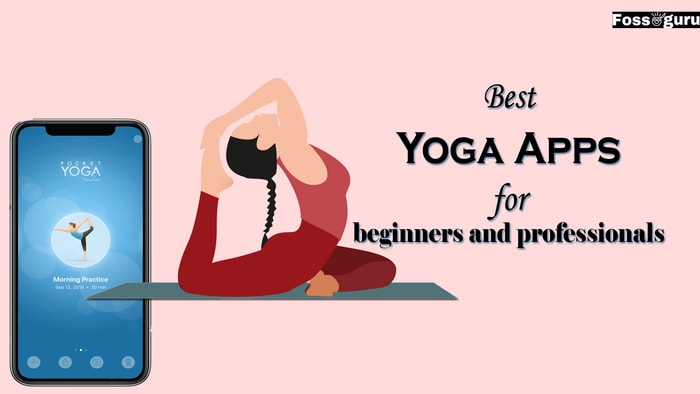Best Yoga App: Finding the ideal yoga app can transform your practice. This comprehensive guide delves into the key features, pricing models, yoga styles, user reviews, technological aspects, community features, and marketing strategies that differentiate top-performing apps. We’ll help you navigate the world of digital yoga and select an app that perfectly aligns with your needs and goals.
From assessing the quality of instructional videos and the breadth of yoga styles offered to examining user reviews and considering the app’s technological capabilities, we provide a thorough analysis to aid your decision-making process. We’ll explore different pricing structures, highlighting the value proposition of each model, and examine the importance of community features and effective marketing strategies employed by successful apps.
Ultimately, our aim is to empower you to choose the best yoga app for your individual journey.
Top Yoga App Features
The success of a yoga app hinges on its features. A well-designed app should cater to diverse user needs and preferences, offering a seamless and engaging experience. This section examines essential features, innovative additions, and UI/UX elements contributing to user satisfaction.
Desirable Yoga App Features
The following table categorizes desirable features in a yoga app, highlighting their functionality.
| Category | Feature | Description | Example |
|---|---|---|---|
| Video Library | High-quality video content | A vast library of yoga videos covering various styles and levels. | Glo offers a comprehensive library with diverse instructors and styles. |
| Personalized Plans | Customizable workout schedules | Allows users to create personalized plans based on their goals, experience level, and available time. | Down Dog offers highly customizable plans based on style, level, and duration. |
| Progress Tracking | Metrics and analytics | Tracks user progress, including workout history, duration, and other relevant metrics. | Peloton offers detailed progress tracking and analytics for all workouts. |
| Offline Access | Downloadable content | Allows users to access content offline, useful for travel or areas with limited connectivity. | Many apps offer offline downloads of select videos or playlists. |
| Guided Meditations | Audio-guided meditation sessions | Offers guided meditations to complement yoga practice and promote relaxation. | Calm and Headspace offer a wide variety of guided meditations. |
| Community Features | Social interaction and support | Provides a platform for users to connect, share progress, and support each other. | Many apps offer forums or social media integration. |
| Music Integration | Customizable playlists or pre-made options | Allows users to create custom playlists or use pre-made playlists to enhance their practice. | Many apps integrate with Spotify or Apple Music. |
| Instructor Profiles | Detailed information about instructors | Provides detailed information on instructors’ qualifications, experience, and teaching style. | Most apps offer instructor bios and photos. |
Innovative Features in Leading Yoga Apps

Source: bestapp.com
Finding the best yoga app can significantly impact your wellness journey. However, efficient scheduling is equally crucial, as highlighted in this shocking report on the public TXDPS scheduler: unbelievable why public txdps scheduler matters – essential insights revealed – discover the shocking details. Understanding effective scheduling principles, as revealed in the report, can help you optimize your yoga practice and maximize the benefits of your chosen app.
Innovative features enhance user engagement and cater to specific needs. For example, some apps utilize AI to personalize workout plans based on user data, while others incorporate gamification elements to boost motivation. Advanced features like real-time posture correction using AR technology are also emerging.
User Interface (UI) and User Experience (UX) Design
A user-friendly interface is crucial for app success. Intuitive navigation, clear visual hierarchy, and aesthetically pleasing design contribute to a positive user experience. Apps with clean layouts, easy-to-understand instructions, and personalized settings tend to receive higher ratings.
App Pricing Models and Value
Yoga apps employ various pricing models to monetize their services. Understanding these models and their associated value propositions is crucial for both developers and users.
Comparison of Pricing Models
- Freemium: Offers basic content for free, with premium features or access to a larger library available through a subscription or in-app purchases. Pros: attracts a large user base; Cons: limited functionality in the free version may frustrate users.
- Subscription-based: Users pay a recurring fee for access to all app features. Pros: consistent revenue stream for developers; Cons: can be a barrier to entry for budget-conscious users.
- One-time purchase: Users pay a single fee for lifetime access to the app’s content and features. Pros: provides upfront revenue; Cons: limited potential for recurring revenue.
Hypothetical Pricing Structure
A new yoga app could adopt a freemium model, offering a limited selection of free classes and guided meditations. A premium subscription could unlock the full library of videos, personalized workout plans, and progress tracking features. This model balances accessibility with revenue generation.
Yoga Styles and Expertise
The range of yoga styles and the expertise of instructors are key differentiators for yoga apps. Understanding these aspects helps users choose an app that aligns with their needs and experience level.
Yoga Styles Offered by Leading Apps
| Yoga Style | Experience Level | Description | Example App |
|---|---|---|---|
| Hatha | Beginner to Advanced | A foundational style focusing on basic postures and breathwork. | Many apps offer Hatha classes. |
| Vinyasa | Beginner to Advanced | A dynamic style that flows between postures, synchronized with breath. | Many apps offer Vinyasa classes. |
| Yin | Beginner to Advanced | A slow-paced style focusing on holding poses for extended periods. | Many apps offer Yin classes. |
| Restorative | All Levels | A gentle style using props to support the body in passive poses. | Many apps offer Restorative classes. |
Instructor Qualifications and Teaching Styles
Leading yoga apps often feature instructors with extensive experience and certifications. Teaching styles vary, ranging from energetic and motivational to calm and meditative. Users can choose instructors based on their preferred style and approach.
Hypothetical Instructor Profile
A new yoga app could feature a certified instructor specializing in prenatal yoga. This instructor’s profile would highlight their experience working with pregnant women, their gentle and supportive teaching style, and their focus on safe and effective practices for expectant mothers.
User Reviews and App Store Ratings: Best Yoga App
User reviews provide valuable insights into user satisfaction and app performance. Analyzing these reviews helps identify areas for improvement and enhances the overall user experience.
Analysis of User Reviews
Common themes in user reviews often revolve around app functionality, user interface, instructor quality, and pricing. Positive reviews praise features like personalized plans, high-quality videos, and a supportive community. Negative reviews frequently cite technical glitches, limited content, or a confusing user interface.
Examples of User Feedback, Best Yoga App
Positive feedback might include: “Love the variety of classes and the personalized workout plans!” Negative feedback might include: “The app constantly crashes, and the video quality is poor.”
Strategy for Responding to Negative Reviews
Responding to negative reviews professionally and constructively is crucial. Acknowledging the user’s concerns, offering solutions or apologies, and demonstrating a commitment to improvement builds trust and enhances the app’s reputation.
Technological Aspects and Accessibility
Technological advancements significantly impact the user experience in yoga apps. High-quality video and audio, offline functionality, and accessibility features are essential for a positive user experience.
Technological Features of Top-Rated Apps
Top-rated apps typically offer high-definition video, clear audio, and offline access to selected content. Some apps utilize advanced technologies such as AI-powered pose detection for personalized feedback or AR features to overlay instructional cues onto the user’s physical space.
Accessibility Features

Source: fossguru.com
Accessibility features are crucial for inclusivity. Apps should offer options for users with visual or auditory impairments, such as closed captions, audio descriptions, and adjustable font sizes.
Future Technological Advancements
Future advancements might include more sophisticated AI-powered pose correction, personalized feedback based on individual body mechanics, and integration with wearable fitness trackers for more comprehensive data analysis.
Community and Social Features
Community features enhance user engagement and motivation. Social interaction, progress sharing, and peer support can foster a sense of belonging and encourage consistent practice.
Effective Community Features
Successful yoga apps often incorporate features such as forums, social media integration, and leaderboards. These features allow users to connect with each other, share their experiences, and motivate one another.
Enhancing User Engagement
Social features can significantly boost user engagement and motivation. Sharing progress, participating in challenges, and receiving feedback from peers can encourage consistent practice and promote a sense of community.
Marketing and App Discovery
Effective marketing strategies are crucial for attracting and retaining users. App store optimization (ASO), social media marketing, and influencer collaborations are essential for app discoverability and growth.
Marketing Strategies
Successful yoga apps often employ a multi-faceted marketing approach, including ASO, social media marketing, content marketing (blog posts, articles, etc.), and influencer collaborations. They target specific demographics interested in wellness and fitness.
App Store Optimization (ASO)
ASO involves optimizing the app’s title, description, s, and screenshots to improve its ranking in app store search results. This increases visibility and organic downloads.
Social Media Marketing
Social media platforms provide a powerful channel for promoting yoga apps. Targeted advertising, engaging content, and influencer marketing can reach a wider audience and build brand awareness.
Conclusion
Selecting the best yoga app is a personal journey, dependent on individual preferences and practice goals. By carefully considering the factors Artikeld in this guide – from the app’s features and pricing to user reviews and technological capabilities – you can confidently choose a digital companion that enhances your yoga experience. Remember to explore free trials or introductory offers to ensure compatibility before committing to a subscription.
Your perfect yoga app awaits!
